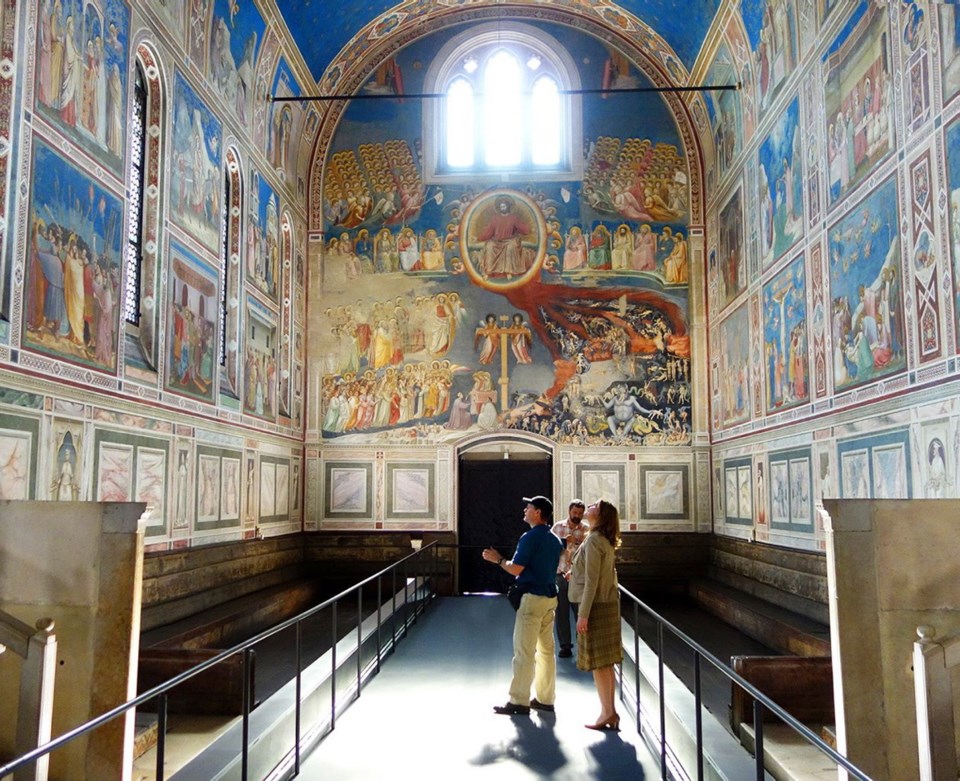Spain and Italy are working hard to accommodate hordes of travellers hungry to experience their delightful cultures.
The big news in Florence is the food scene. The steel-and-glass Central Market has undergone an exciting resurgence. The top floor is now an inviting, upscale food court and several of the restaurants stay open late. On the ground floor of the market, vendors still sell meat, fish and produce. The open-air San Lorenzo Market, whose stalls used to surround the Church of San Lorenzo, still sprawls down the streets ringing Central Market.
Florence now has an EATaly, part of a growing chain of foodie mini-malls that are popping up in big Italian cities. The slick, modern mall has a gelato counter, pastry shop, gourmet grocery store and a cluster of food counters serving pastas and pizzas, main dishes and daily specials.
On the art scene, Florence’s Duomo Museum, with works by Michelangelo and Donatello, is closed for renovation until November 2015.
In Siena, the Santa Maria della Scala museum is open after an extensive renovation, displaying some of the most ancient Byzantine reliquaries in existence. And a new section covers Siena’s history.
In Padua, you can get 40 minutes inside the Scrovegni Chapel to view Giotto’s marvelous frescoes (instead of the usual 20 minutes), if you pay four euros extra and visit in evening hours.
If you want to see Bolzano’s Otzi the Iceman — the hiker found entombed in a glacier for 5,000 years — without getting buried in lines, buy your ticket online at least a day in advance, print it and bring it to the archaeological museum (iceman.it).
If you’re Romeward-bound, book your hotel room and Vatican Museum tickets early. Pope Francis is a big draw — and, as anywhere, with crowds come pickpockets. Beware of any commotion — even caused by children and pregnant women — in the metro and anywhere crowds form. Wear a money belt.
Across the Mediterranean, throughout Spain’s Catalunya region and particularly in Barcelona, restaurant menus have traditionally been in Spanish and Catalan, but these days — with the feisty spirit of Catalan independence stoked — you’ll often find menus in Catalan and English without Spanish.
Barcelona’s big news for art lovers is the opening of Casa Lleo Morera, which has one of the best-preserved Modernista interiors (from 1906), containing finely crafted mosaics. Reservations are required and access is by tour only (casalleomorera.com).
Also for Barcelona, the easiest way to get advance tickets for architect Antoni Gaudi’s soaring Sagrada Familia is on the church’s own website (sagradafamilia.cat). At Gaudi’s popular Parc Guell, you now need a timed-entry ticket to enter the Monumental Zone to see the architect’s iconic work: the colourful dragon, grand staircase and wavy benched view terrace. While the rest of the park is free and wide open, reserve your seven-euro ticket online as far in advance as you can.
San Sebastian is spiffing itself up to be a European Capital of Culture in 2016. Its excellent Museum of San Telmo has more exhibits on Basque culture than ever.
In Madrid’s Royal Palace, the kitchen, where the gala dinners were prepared, will open to the public, though the royal pharmacy has closed. The National Archaeological Museum has reopened after a major renovation — it’s like a small British Museum.
Toledo’s plan to make the old town centre essentially traffic-free is taking shape with construction of a new parking lot and escalator that should ease the walk from the train station.
Gibraltar’s monkeys, which congregate at the Apes’ Den on the Rock, have gotten more aggressive, spoiled by being fed for photo ops. Taxi drivers have been warned to stop feeding them.
In Cordoba, the brand-new Museo Taurino Cordoba pays tribute to the city’s bullfighting tradition with a variety of displays (though similar museums in Ronda and Sevilla are better).
Rick Steves (ricksteves.com) writes European travel guidebooks and hosts travel shows on public television and public radio. Email him at rick@ricksteves.com and follow his blog on Facebook.
